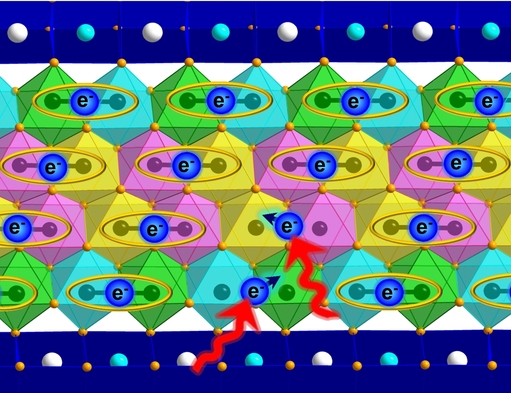DEVELOPER TOOLS
High-pressure scientists in Bayreuth discover promising material for information technology
Researchers at the University of Bayreuth, a public research university situated in Germany, have discovered an unusual material: When cooled down to two degrees Celsius, its crystal structure and electronic properties change abruptly and significantly. In this new state, the distances between iron atoms can be tailored with the help of light beams. This opens up intriguing possibilities for application in the field of information technology. The scientists have presented their discovery in the journal "Angewandte Chemie - International Edition". The new findings are the result of close cooperation with partnering facilities in Augsburg, Dresden, Hamburg, and Moscow.
The material is an unusual form of iron oxide with the formula Fe₅O₆. The researchers produced it at a pressure of 15 gigapascals in a high-pressure laboratory of the Bavarian Research Institute of Experimental Geochemistry & Geophysics (BGI) based at the University of Bayreuth. If the temperature drops to two degrees Celsius, as can be found in a household refrigerator set rather cold, a sudden structural change occurs: Iron ions, which are strung together in long chains at higher temperatures, rearrange themselves into pairs instead. Two iron ions form a bond between each other, which consists of a single shared electron only. {module INSIDE STORY} 
Applying light rays selectively from an external source can intervene in the formation of this new crystal structure. If they have a suitable wavelength, they are able to break the bond between two particular iron ions: the ion pair splits up. As a result, the individual iron ions begin to move around somewhat, meaning their distance from each other and their physical state change. "This targeted influencing of atomic spacing at refrigerator temperatures, which are easy to achieve industrially, has great potential for application in the IT sector. It can be used, for example, in quantum supercomputers, for storage elements measuring only a few nanometers, or for equally tiny switches," explains Dr. Sergey Ovsyannikov from BGI, first author of the publication.
The synthesis and investigation of iron oxide Fe₅O₆ are of fundamental importance in clarifying the relationships between the crystal structure of iron oxides and their physical properties. This is a further finding of the study now published. Interestingly, the distance between the iron ions, which are strung together in chains at normal ambient temperatures, seems to determine at exactly which lower temperature the aforementioned sudden structural change occurs, and the resulting new properties arise. “These findings provide a valuable basis for developing new materials for information technology”, resumes Prof. Dr. Leonid Dubrovinsky from BGI, who coordinated the research work.
